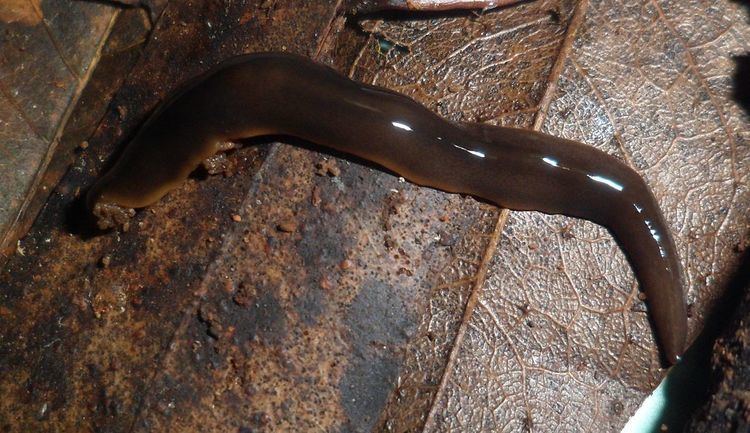Class Rhabditophora Suborder Continenticola | Phylum Platyhelminthes Order Tricladida | |
 | ||
Similar Obama ladislavii, Obama, Geoplanidae | ||
Obama anthropophila vs luteostriata abundans
Obama anthropophila is a species of Brazilian land planarian in the subfamily Geoplaninae. It is a very common land planarian in human-disturbed environments in southern and southeastern Brazil.
Contents
Description
Obama anthropophila is a medium-sized land planarian with a lanceolate body. The largest specimens have a length of about 70 millimetres (2.8 in) or more. The dorsum varies from dark to light brown, becoming lighter towards the body margins. The ventral side is pale grey or brown and has a darker margin that is a continuation of the color of the dorsum. It is very similar in appearance to the closely related Obama decidualis and Obama ladislavii, the main difference with the latter being the color.
The numerous of eyes of O. anthropophila are distributed marginally on the first millimeters of the body and posteriorly become dorsal, occupying almost the entire body width at the median third. Posteriorly they become less numerous. The dorsal eyes are surrounded by a region without pigmentation (halo), which can be visible on darker individuals through fine inspection as a set of small light dots.
On fully mature specimens, two irregular rows of spots with a darker tinge may be seen on the first half of the body. Those rows are the many dorsal testicles visible through the body.
Distribution
Obama anthropophila has been recorded in southern and southeastern Brazil, from São Paulo to Rio Grande do Sul. It is mainly found in human-disturbed environments and at the border of native subtropical forests.
Diet
In the laboratory, O. anthropophila captures and consumes small land gastropods, including some agricultural pests, such as Bradybaena similaris, Helix aspersa and Deroceras laeve. It also feeds on other land planarians, such as Luteostriata abundans, which probably constitute its main native prey, and invasive species, such as Dolichoplana carvalhoi and Endeavouria septemlineata. On rare occasions, it may even prey on other species of the same genus, such as Obama ladislavii.
